Get the lawn of your dreams with our expert grass care tips. From choosing the right fertilizer to seasonal maintenance, learn how to cultivate a beautiful, lush lawn year-round.
Welcome to your definitive guide for achieving a green lawn that’s the envy of your neighborhood. If you’ve been on the quest for a healthy lawn and have hit a few bumps along the way, rest assured you’re not alone. Like you, many homeowners find themselves a little lost when navigating their lawn’s needs. But let’s cut to the chase: A perfect lawn is more attainable than you might think.
Having a beautiful lawn takes hard work – and a bit of science. It’s easy to believe that all you must do is throw chemicals at your grass and mow it regularly, but there’s so much more involved in ensuring that lush, vibrant color all growing season.
If you don’t want to spend thousands of dollars in landscaping and appreciate putting a little elbow grease in to ensure your home has splendid curb appeal, you must consider these four invaluable elements of a healthy, happy lawn.
First things first, knowing the type of grass you’re dealing with is crucial. Different grass types have unique needs, and meeting those needs is the cornerstone of any effective lawn care and maintenance strategy.
Now, let’s talk about food, but not the kind that lands on your dinner table. Your lawn needs nourishment, and that comes from fertilizer. To get a lush, green lawn, you must feed your lawn the right blend of nutrients. It’s not just about dumping a bag of fertilizer and calling it a day; it’s about understanding what your lawn needs and when it needs it.
This is not a one-time deal; keeping a healthy lawn requires ongoing lawn maintenance. Consistency is key. Regularly fertilizinaerg, watering, and mowing are fundamental to keep your lawn looking its best. Think of these tasks as the lawn care basics that you can’t afford to skip.
So here’s what’s in store for you: Practical lawn care tips and steps that will guide you from where you are now to where you want to be, which is, of course, lounging and admiring your best lawn ever. Stick around. Your journey to lawn excellence starts right here.
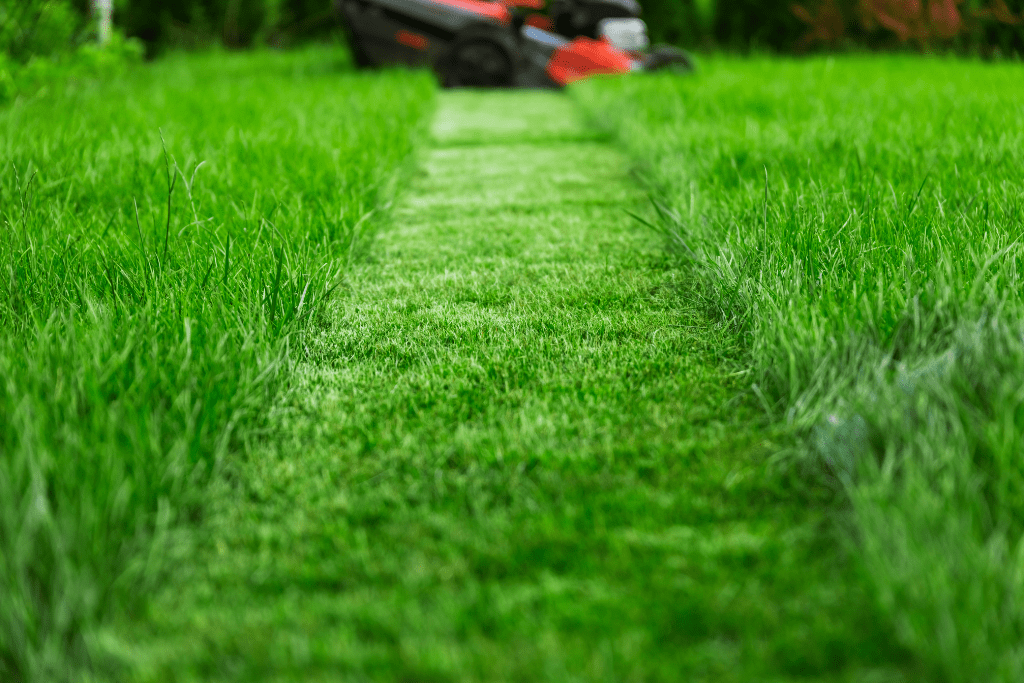
Know Your Turf: Identifying Your Type of Grass
The type of grass growing under your feet is the foundation of all your lawn care efforts. Many American lawns are meant to mimic golf courses: flat, broad expanses, all in unerring green. However, what many other than the most keen-eyer golfers don’t realize is that your ball winds across a tiny mixture of many different grass species, each of which provides a different spring and resistance.
You might think all you need to do is seed your lawn one particular species to ensure a great color and an aesthetically pleasing homogeneity. However, having a diverse mix of grasses improves drought resistance and reduces the need for regular herbicide because it can more easily deter weeds.
Common grasses used in golf courses include Bermuda grass, bentgrass, and perennial ryegrass. However, if you’d really like to ensure maximum hardiness, take some time to investigate native grasses of your region, as they will provide the best growth, pest resistance, and water conservation. Knowing what you’re working with is the first step in any lawn care journey.
Common Types of Grass and Their Characteristics
Several grass types are commonly found in residential lawns, and each has its own set of needs and characteristics:
- Kentucky Bluegrass: Loves full sun and grows well in moderate temperatures. It’s what you’ll often see in those picture-perfect lawns.
- Fescue: This is your go-to grass for shady areas. It’s also quite resilient, standing up well to drought or high foot traffic.
- Bermuda: If you’re in a hot and sunny climate, Bermuda might be your lawn’s best friend. It loves the heat but isn’t a fan of the shade.
- St. Augustine: Ideal for warm, coastal areas, St. Augustine grass loves the sun and can even tolerate some salt.
- Zoysia: This grass type is a bit of a slow grower but worth the wait. It’s drought-tolerant and can stand up to heavy foot traffic once established.
Regional Considerations for Grass Types
Your ZIP code isn’t just for mailing letters; it’s a determinant in your grass type selection. Here’s a general breakdown:
- Northern Regions: Cooler climates are often home to grasses like Kentucky Bluegrass and Fescue, which can handle the cold and have a decent tolerance for various soil types.
- Southern Regions: If you’re in the south, you’re likely dealing with heat-tolerant grasses like Bermuda or St. Augustine that thrive in warm temperatures.
- Transitional Zones: For those in between the North and South, you’ve got a mixed bag. Zoysia is commonly found here as it’s somewhat adaptable to various conditions.
Understanding the impact of your regional climate is critical for the long-term health and appearance of your lawn. You can’t change your geography, but you can pick a grass type that’s best suited for it. Now, armed with the basics of grass identification, you’re one step closer to becoming the steward of your dream lawn.
pH Testing
You may know about pH in regards to acids and bases from high school chemistry class, but what you might not know is that soil has pH too: soil is composed of a mixture of organic material, minerals, clay, sand, and tiny rocks, all in a unique ratio. Those minerals impact the pH of the soil, which can make it either too acidic or too basic to support healthy grass and flower growth.
Healthy soil has a pH between 5.5 and 7.5, which means that it tends to be slightly acidic to just barely alkaline. You must test your soil to see if it’s within these optimum ranges, as this is when it’s best able to support your carefully tended plants. If it’s below 5.5 – as in too acidic – you’ll want to treat your lawn with limestone, which has a high pH and can help balance everything out. For overly alkaline soil, you can dose it with elemental sulfer, iron sulfate, and aluminum sulfate. Be sure to test regularly, both to ensure that your treatment worked and that you don’t need to make any further changes.
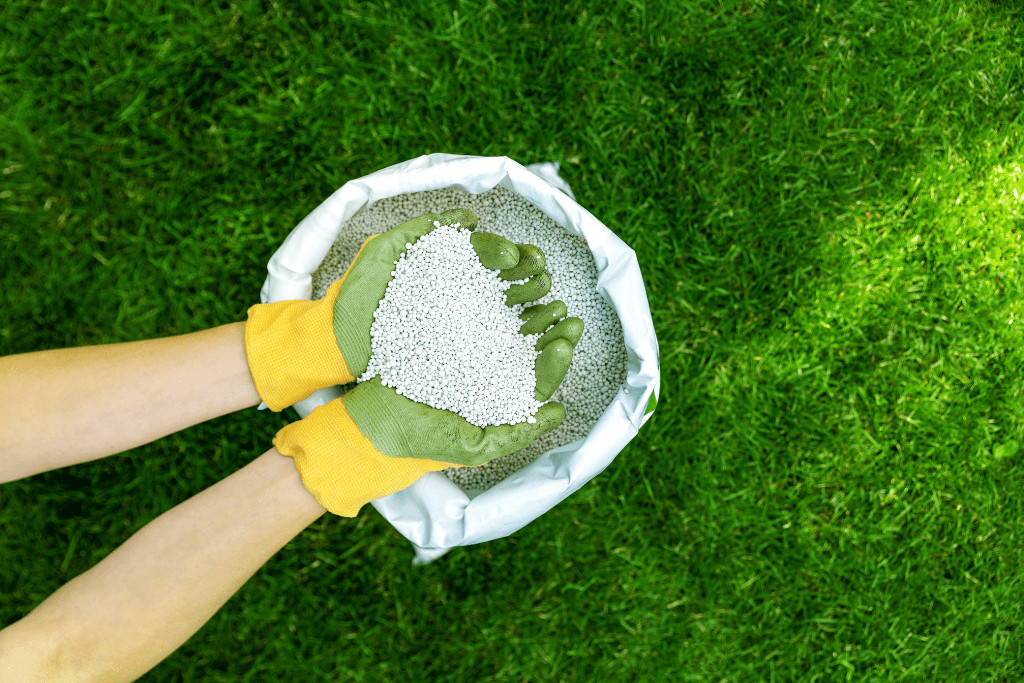
The Nutritional Guide: Understanding Fertilizer
Imagine this: You wouldn’t eat the same meal every day and expect to get all the nutrients your body needs. Similarly, your lawn needs more than just water and sunlight to thrive. That’s where fertilizer comes in. Think of fertilizer as the multi-vitamin your lawn takes to keep healthy, resilient, and the envy of the neighborhood. You’ll find various kinds of fertilizers on the market, primarily categorized into organic and synthetic types. Organic fertilizers are made from natural materials and are generally slower-acting, while synthetic fertilizers offer immediate nutrients but may require more frequent application. Now let’s dig deeper into the nutrients, timing, and techniques that make your lawn the envy of the block.
Nutrient Ratios and What They Mean for Your Lawn
When you pick up a bag of fertilizer, you’ll often see three numbers, like 10-10-10 or 20-5-10. These numbers represent the percentage of nitrogen, phosphorus, and potassium, respectively, present in the mix. Here’s a breakdown:
- Nitrogen: Makes your lawn greener and helps the grass grow quickly.
- Phosphorus: Vital for root development, especially for new lawns or areas you’ve patched up.
- Potassium: This is your go-to for resilient grass that can withstand changes in temperature, drought, and foot traffic.
Choosing the right ratio depends on the specific lawn problems you’re addressing. For example, if your grass gets a lot of foot traffic, you might opt for a fertilizer high in potassium.
Timing: When to Fertilize for Optimal Results
The best time to fertilize your lawn depends on the type of grass and your local climate. However, a general rule of thumb is to fertilize during the growing season. For most grass types, early spring and late fall are ideal. Timing your applications right can make your lawn the envy of the neighborhood, helping not just growth but also weed control. A well-timed fertilization can help prevent weeds by allowing the grass to cover any bare spots where weeds could sprout.
How to Choose the Right Fertilizer for Your Type of Grass
Just like you wouldn’t serve steak at a vegetarian dinner, you wouldn’t want to use the wrong type of fertilizer for your specific grass type. The nutrient needs can vary depending on whether you have Kentucky Bluegrass, Fescue, or Bermuda. A soil test can be an invaluable lawn care step, revealing what nutrients your lawn at least needs more of. From there, you can choose a fertilizer that best meets those needs, helping you maintain your lawn effectively.
Application Methods: Spreaders, Spraying, etc.
There’s more than one way to feed a lawn, and the method you choose can significantly affect how well the fertilizer is absorbed. Here are a few common application methods:
- Drop Spreaders: Good for small to medium-sized lawns, giving you control but requiring more passes.
- Broadcast Spreaders: These are ideal for larger lawns but can be a bit tricky around the edges.
- Spraying: Liquid fertilizers allow for quick absorption but might require more frequent applications.
Before you begin, make sure to rake the lawn to remove any debris, ensuring an even application. After applying, a quick watering helps the grass roots absorb the nutrients more efficiently.
Safety Precautions: Pets, Children, and Environmental Concerns
Fertilizing your lawn is not without its risks, especially when kids and pets use the yard for play. Always follow the guidelines on the fertilizer package, including any wait times before it’s safe to return to the yard. Some fertilizers can be harmful to local waterways, so be mindful of runoff. An eco-friendly option might suit you if environmental concerns are a priority. Safety should be integrated into your lawn maintenance schedule to keep everyone healthy and happy.
By understanding fertilizers, you’re well on your way to a lawn that doesn’t just look great but is healthy from the roots up. So go ahead, make your neighbors do a double-take as they pass by your lush, green kingdom.
Diagnosing Mineral Deficiencies
Nitrogen, phosphorus, and potassium are the most well-known lawn treatments, as they are some of the most important components of plant growth, but there are numerous other minerals that grass and flowers need in varying ratios. Just like humans and other living beings, plants require a small amount of iron and magnesium, but they also require humic acid: this is the acid that comes from humus, or decaying plant matter.
Humic acid binds to roots and helps them receive water and other nutrients, which is why a richly composted lawn has such dramatic growth. If your lawn looks lackluster, you may be missing this or other minerals; as with pH, the only way to know is to use a soil analysis kit, which you can buy online from garden stores and science depots.
The easiest way to introduce humic acid to the soil is to use compost, which naturally produces this acid as the materials break down, but you can also buy liquid humic acid if you don’t want to compost.
As for iron and magnesium, these also come in liquid forms that you can spray across your lawn to improve the concentration across the soil.
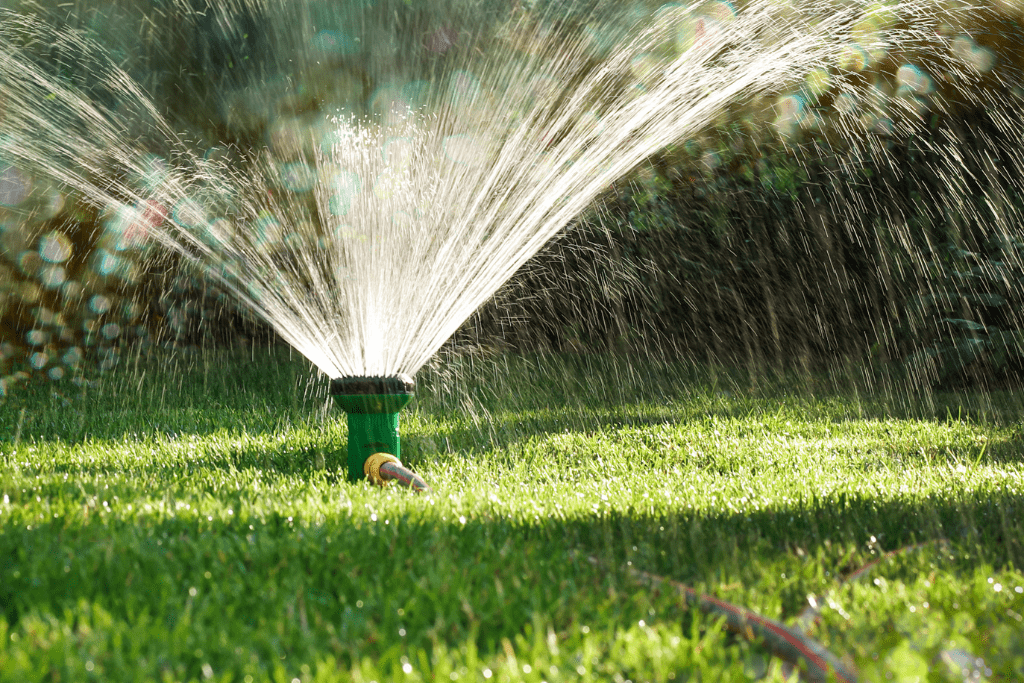
Watering Wisdom: Hydration for Your Lawn
Watering isn’t just an add-on to lawn care; it’s a cornerstone. Your lawn needs water for essential functions like nutrient absorption and growth. If you want a yard that’s not just surviving but thriving, understanding how and when to water is crucial.
Why Watering Is Crucial for a Healthy Lawn
Water serves as the delivery system for nutrients from the soil to the grass. It’s what makes your lawn resilient against environmental stress and more resistant to pests. Without the right amount of water, your lawn won’t just lose its sheen; it could lose its basic health.
Best Time to Water and How Much Is Needed
Early morning is prime time for watering your lawn. The temperatures are cooler, which reduces water loss due to evaporation. As for how much, aim for 1 to 1.5 inches per week, either through rainfall or your own watering. Consistency is key, so make it a point to water at least once a week. For new grass or after overseeding, you might need to water more frequently.
Signs of Overwatering or Underwatering
Overwatering leaves your lawn soggy and prone to diseases. If puddles form or the soil feels too wet, you’re overdoing it. Underwatering, on the other hand, turns your grass a blue-gray color and causes the grass blades to wilt. If your footprints linger on the lawn longer than they should, it’s time for a good watering.
To break it down, if you’re aiming to keep your lawn healthy, whether it’s cool-season or warm-weather grass, you need to water smartly. If you find yourself in a bind, don’t hesitate to consult a lawn care professional to guide you through your lawn’s specific needs. A well-watered lawn isn’t just an aesthetic goal; it’s a basic lawn care step every homeowner should grasp.
Aerating Your Lawn
To have an enviable lawn that is lush and vibrant, homeowners often overlook the importance of proper lawn aeration. Simply mowing and watering your lawn regularly won’t give you the desired results. Lawn aeration plays a vital role in achieving and maintaining healthy turf.
The process involves creating small openings in the soil to facilitate air, water, and nutrient absorption by the grassroots. This overlooked step can significantly enhance the overall health of your precious greenery, something you shouldn’t underestimate! By prioritizing lawn aeration, you’ll be investing in long-term benefits for your yard’s vitality.
Seasonal Lawn Care Tips
Lawns are like people; they go through moods depending on the season. Just as you wouldn’t wear a winter coat in July or go swimming in January, your lawn has specific needs that vary throughout the year. Let’s go through the calendar and highlight best practices for keeping your lawn looking its best each season.
Spring: Awakening Your Lawn from Winter
Spring is your lawn’s growth spurt. Mow your lawn to about 2.5 to 3 inches in grass height. Use an aerator to loosen the soil, making it easier for grass seed to take root and fill in bare or patchy areas. Apply pre-emergent weed treatments to stop weeds before they start.
Summer: Dealing With Heat and Increased Foot Traffic
Summer is survival mode for your lawn. Raise your mower’s blade; longer grass shades the soil and inhibits weeds. If you see dead spots or worn areas from foot traffic, treat them immediately. This is also the time when your lawn needs to feed, so apply a balanced fertilizer.
Fall: Preparing Your Lawn for Winter
Fall is for repair and preparation. Keep mowing but lower your mower blade for the last few cuts before winter. This helps your grass prepare for colder temperatures. Aerate the soil, then spread grass seed to repair bare spots. Keep watering until the first frost.
Winter: Maintenance for Colder Climates
In winter, your lawn is dormant but not dead. Remove heavy layers of snow to prevent diseases like snow mold. Limit walking on the lawn to avoid soil compaction, making spring recovery more challenging.
So there you have it. Your lawn has different needs based on the season. By following these best practices, you set the stage for a yard that looks good year-round.
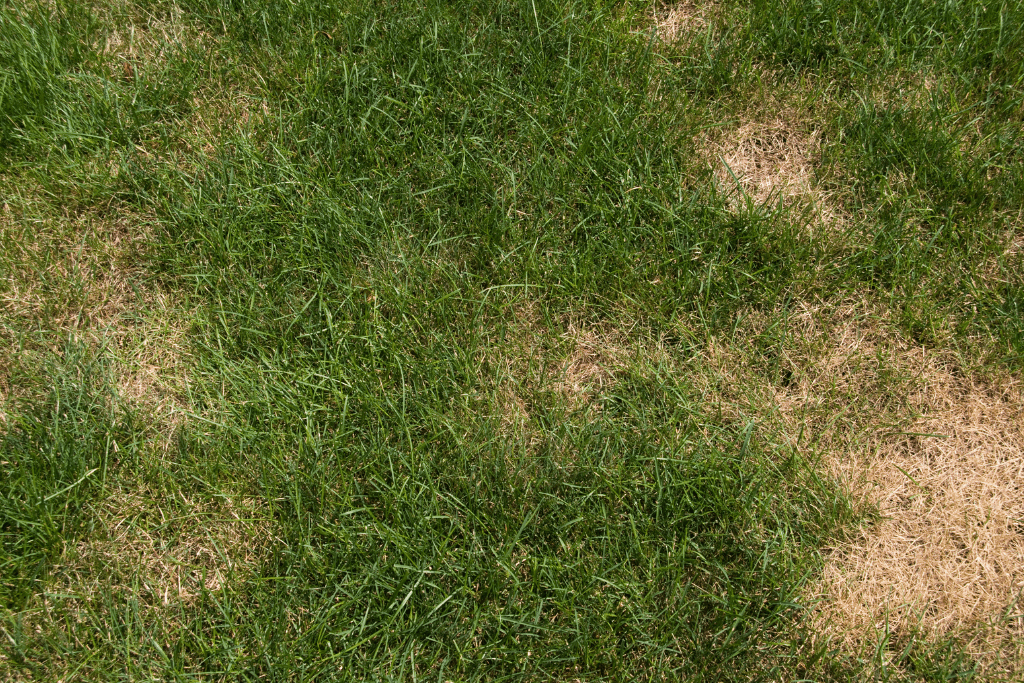
Troubleshooting Common Lawn Problems
Every lawn encounters some issues, and most problems are more common than you’d think. But you can’t make it better until you know what’s wrong. From brown patches to pest invasions, let’s get into the nitty-gritty of what your lawn might be trying to tell you and how to address it.
Brown Patches: Causes and Solutions
Brown patches can signify a disease or lack of nutrients. The first step is identifying the cause—much like you would study search queries to understand why certain pages don’t perform well. Soil tests can reveal if nutrient deficiencies are to blame. If a disease is suspected, fungicides can often remedy the problem.
Thinning Grass: What It Signifies and How to Correct It
Noticing your grass is thinning is a warning sign. Thinning grass can be due to compacted soil, lack of nutrients, or even mowing too low. Aerate your soil to improve oxygen and nutrient absorption. Follow up with proper fertilization, and adjust your mowing height. It’s like tweaking your website based on insights from search engines to improve its overall health.
Insect Control: Identifying Common Pests and Remedies
Pests are to lawns what bad SEO is to website owners—something you want to get rid of as soon as you identify it. Just as you would scan for issues affecting your search appearance, keep an eye out for telltale signs of insect activity, such as irregular brown patches or visible insects. Common culprits include grubs, chinch bugs, and sod webworms. Use targeted insecticides for specific pests, making sure to follow safety guidelines.
Addressing these common issues promptly can save you from bigger headaches down the road.
Setting Up a Lawn Care Calendar
Keeping your lawn in top shape is like running a marathon, not a sprint. It requires regular attention, but where do you start? Just like you wouldn’t tackle crabgrass and broadleaf weeds in the dead of winter, some activities are best suited for specific times. Here’s how to map out a lawn care calendar so you’re always one step ahead.
Importance of Consistent Lawn Care and Maintenance
Consistency is key. Let’s say you only mow when you feel like it or apply fertilizer at random; you’re inviting lawn spots and weeds to grow. Just like you wouldn’t ignore regular maintenance on your car, your lawn requires consistent love too.
Creating a Monthly Checklist Based on Your Lawn’s Needs
First, identify what you’ll need for your type of grass. Different grass varieties require varying levels of care. So, whether you have a warm-season grass like Bermuda grass or you’ve opted for a cool-season variety, you need a plan. Create a monthly checklist that considers your specific needs from lawn mowing to fertilizing.
Adapting the Schedule for Weather Fluctuations
Your lawn is a living, breathing thing, susceptible to changes in weather. Adjust your care schedule for unexpected heatwaves or cold snaps. This could mean additional watering or delaying your fertilizer application.
Lawn Care Calendar
| Prepare for the first frost | Warmer Climates | Colder Climates |
|---|---|---|
| January | Test soil pH | Keep off frozen grass |
| February | Apply pre-emergent for crabgrass | Plan the year’s lawn care |
| March | Mow based on grass growth | Fertilize as grass begins to grow |
| April | Spot treatments for broadleaf weeds | Start regular mowing |
| May | Fertilize warm-season grasses | Deal with lawn weeds |
| June | Monitor for pests | Spot treatments for broadleaf weeds |
| July | Deep water areas of your lawn | Mow based on grass growth |
| August | Dethatch lawn spots | Fertilize and water |
| September | Overseed lawn spots | Aerate and overseed |
| October | Reduce mowing frequency | Prepare for first frost |
| November | Final fertilizer before winter | Final mowing |
| December | Stay off grass | Keep off frozen grass |
By following this guide, you set the groundwork for a lawn that’s not just the talk of the day of the week it’s mowed but year-round. Spread the seed of good lawn care, and you’ll reap what you sow.
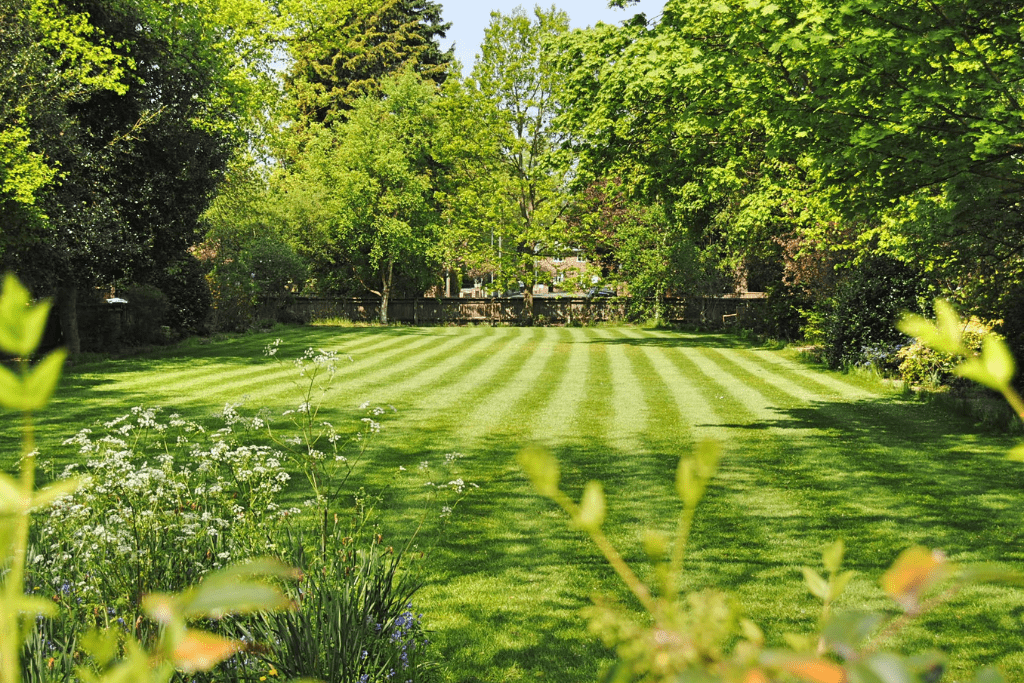
Conclusion
In today’s urban landscapes, lawns have become an indispensable component with their aesthetic charm, recreational benefits, as well as effective air and soil detoxification properties. Investing in proper lawn care is undoubtedly an investment toward establishing long-lasting health and vibrancy within your landscape.
Maintaining a healthy and vibrant yard takes a lot of hard work, and there are numerous factors that you must attend to if you want to have that picture-perfect curb appeal. These include improving biodiversity, testing for pH and mineral deficiencies, and ensuring enough air is reaching the roots of your plants.
By recognizing the significance of a lawn care routine, you not only ensure the vitality and beauty of your property but also play an active role in supporting the overall well-being of your ecosystem.


Great article! Maintaining a lush lawn is an art, and these grass care tips are spot on. Considering the right mowers for different tasks can truly make a significant impact on achieving that beautiful green carpet in our yards.
You got my attention when you said that in order to achieve a healthy and vibrant lawn, you must consider having your lawn aerated. My parents mentioned this afternoon over a lunch date that they are interested in finding a turf supplier that can offer us the best possible deal. Your tips will help her ensure that they will achieve a green and healthy lawn for a long time, so your tips are helpful.